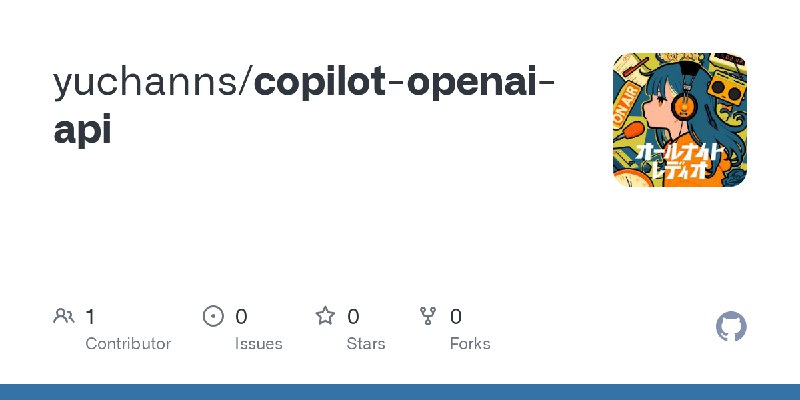ginja 已经写好了第一个版本
go.yuchanns.xyz/ginja
但是性能很不理想,比起 go 标准库 template 慢了十几倍!
接下来想验证:
1. purego v.s. purego+libffi 性能
2. cgo v.s. purego 性能
如果确定是 libffi 拖后腿,我可能就需要考虑如何仅使用 purego 来实现了
go.yuchanns.xyz/ginja
但是性能很不理想,比起 go 标准库 template 慢了十几倍!
接下来想验证:
1. purego v.s. purego+libffi 性能
2. cgo v.s. purego 性能
如果确定是 libffi 拖后腿,我可能就需要考虑如何仅使用 purego 来实现了
#开源项目 我又有个想法。想写一个 #mcptranslator 这个名字并不是说它是一个 mcp 工具,而是表示它会通过 mcp 协议使用一些工具进行翻译。例如,它会首先调用语言检测工具检测语种,然后使用对应语种的词典查阅单词信息,或者专有名词信息,接着根据上下文翻译到目标语言,最后查询 native speaker 常用表达语句,进行本地化润色。灵感来自于参与 yetone 的 avante.nvim 的开发与使用。这个项目促使 AI 使用各种工具优化代码,具有显著的质量提升
#dalbox 按照之前的插件架构设计,一般插件都要以一个进程的形式而存在。感觉有时候不是很必要,尤其是这个插件只是作为一个垫片的形式存在时。例如: 下载插件,本质上是作为一个垫片帮助 dalbox 访问 aria2 的 API, 这种情况下 aria2 已经是一个进程了,垫片作为一个进程显得很不必要。应当考虑支持第二种形式的插件,比如 lua 脚本。这样就可以作为轻量的垫片来实现。运行在 goroutine 管理的 lua vm 下。像订阅这种插件似乎也没有必要以一个单独的进程存在,完全可以是一片 lua 代码, 进行简单地周期性轮询订阅
#TIL https://blog.dsrkafuu.net/post/2020/github-add-commit-to-pull-request/
今天协作修改一个 OpenDAL 的 PR 时学到了
今天协作修改一个 OpenDAL 的 PR 时学到了
# IO密集型后台任务 - 异步循环
async def io_intensive_background_task():
"""
IO密集型后台任务 - 以固定间隔运行
直接使用异步操作,不需要run_in_executor
"""
logging.info("Starting IO intensive background task")
while True:
try:
logging.info("Running IO intensive task cycle")
# 模拟IO密集型操作,如文件操作或网络请求
start_time = time.time()
# 模拟多个并发IO操作
io_tasks = [simulate_io_operation() for _ in range(5)]
results = await asyncio.gather(*io_tasks)
total_io_time = sum(result['time'] for result in results)
elapsed = time.time() - start_time
logging.info(f"IO task completed: {len(results)} operations, "
f"total IO time: {total_io_time:.2f}s, "
f"wall time: {elapsed:.2f}s")
# 等待一段时间再次执行
await asyncio.sleep(30) # 每30秒执行一次
except asyncio.CancelledError:
logging.info("IO intensive background task cancelled")
break
except Exception as e:
logging.error(f"Error in IO intensive task: {e}")
await asyncio.sleep(5) # 出错后短暂等待再重试
async def simulate_io_operation():
"""模拟单个IO密集型操作,如网络请求或文件读取"""
# 模拟IO延迟,如网络延迟
delay = 0.5 + (1.5 * np.random.random()) # 0.5到2秒的随机延迟
start_time = time.time()
await asyncio.sleep(delay) # 模拟IO等待
# 模拟读取的数据
data_size = int(np.random.random() * 1000) # 0到1000的随机数
elapsed = time.time() - start_time
return {
"time": elapsed,
"data_size": data_size
}
@asynccontextmanager
async def lifespan(app: FastAPI):
"""应用生命周期管理"""
# 记录应用启动
logging.info("Application starting up")
# 创建进程池
cpus = get_cpu_limit()
workers = max(1, cpus - 1) # 保留一个CPU给系统和事件循环
app.state.process_pool = ProcessPoolExecutor(max_workers=workers)
logging.info(f"Process pool created with {workers} workers (detected {cpus} CPUs)")
# 启动后台任务
app.state.background_tasks = []
# 添加CPU密集型后台任务
cpu_task = asyncio.create_task(cpu_intensive_background_task(app))
app.state.background_tasks.append(cpu_task)
logging.info("CPU intensive background task started")
# 添加IO密集型后台任务
io_task = asyncio.create_task(io_intensive_background_task())
app.state.background_tasks.append(io_task)
logging.info("IO intensive background task started")
yield
# 清理资源
logging.info("Application shutting down, cleaning up resources")
# 取消所有后台任务
for task in app.state.background_tasks:
task.cancel()
if app.state.background_tasks:
# 等待所有任务正确取消
await asyncio.gather(*app.state.background_tasks, return_exceptions=True)
logging.info("All background tasks cancelled")
# 关闭进程池
app.state.process_pool.shutdown(wait=True)
logging.info("Process pool shut down")
app = FastAPI(lifespan=lifespan)
@app.get("/status")
async def status():
return {"status": "ok", "message": "Server is running with background tasks"}#架构设计思考
接上,补一下代码示例
import os
import time
import asyncio
import logging
import numpy as np
from multiprocessing import cpu_count
from concurrent.futures import ProcessPoolExecutor
from fastapi import FastAPI, Request
from contextlib import asynccontextmanager
# 配置日志
logging.basicConfig(
level=logging.INFO,
format="%(asctime)s - %(levelname)s - %(message)s",
datefmt="%Y-%m-%d %H:%M:%S",
)
def get_cpu_limit():
"""获取容器环境中可用的CPU数量"""
try:
# 检查cgroups v1
if os.path.exists("/sys/fs/cgroup/cpu/cpu.cfs_quota_us"):
with open("/sys/fs/cgroup/cpu/cpu.cfs_quota_us") as fp:
cfs_quota_us = int(fp.read().strip())
# 只有当有实际限制时才继续
if cfs_quota_us > 0:
with open("/sys/fs/cgroup/cpu/cpu.cfs_period_us") as fp:
cfs_period_us = int(fp.read().strip())
container_cpus = cfs_quota_us // cfs_period_us
return container_cpus
# 检查cgroups v2
elif os.path.exists("/sys/fs/cgroup/cpu.max"):
with open("/sys/fs/cgroup/cpu.max") as fp:
content = fp.read().strip().split()
if content[0] != "max": # 有限制
quota = int(content[0])
period = int(content[1])
container_cpus = quota // period
return container_cpus
except Exception as e:
logging.warning(f"Error detecting container CPU limit: {e}")
# 回退到系统CPU计数
return cpu_count()
# CPU密集型函数 - 在单独进程中运行
def cpu_intensive_operation(size=1000):
"""
一个模拟CPU密集型操作的函数,例如矩阵运算
这个函数在一个单独的进程中运行
"""
logging.info(f"Starting CPU intensive operation with size {size}")
# 创建随机矩阵
matrix_a = np.random.rand(size, size)
matrix_b = np.random.rand(size, size)
# 执行耗CPU的矩阵乘法
start_time = time.time()
result = np.matmul(matrix_a, matrix_b)
# 计算一些统计数据
mean_value = np.mean(result)
std_value = np.std(result)
elapsed = time.time() - start_time
logging.info(f"Completed CPU intensive operation in {elapsed:.2f} seconds")
return {
"mean": float(mean_value),
"std": float(std_value),
"elapsed": elapsed
}
# CPU密集型后台任务 - 异步循环
async def cpu_intensive_background_task(app):
"""
CPU密集型后台任务 - 以固定间隔运行
使用run_in_executor将耗CPU的操作卸载到进程池
"""
logging.info("Starting CPU intensive background task")
while True:
try:
logging.info("Running CPU intensive task cycle")
# 获取事件循环
loop = asyncio.get_running_loop()
# 将CPU密集型操作卸载到进程池
result = await loop.run_in_executor(
app.state.process_pool,
cpu_intensive_operation, # 传递CPU密集型函数
500 # 矩阵大小参数
)
logging.info(f"CPU task result: mean={result['mean']:.4f}, time={result['elapsed']:.2f}s")
# 等待一段时间再次执行
await asyncio.sleep(60) # 每分钟执行一次
except asyncio.CancelledError:
logging.info("CPU intensive background task cancelled")
break
except Exception as e:
logging.error(f"Error in CPU intensive task: {e}")
await asyncio.sleep(10) # 出错后短暂等待再重试我们组有个 python 服务,里面有一些机器学习的功能,例如人脸识别和 ocr 还有音频分析等。这些任务用到的通常都是阻塞性的 api。现在我是通过 twsited 将它们创建成单独的线程或进程。但是我更想结合最近实践到的 fastapi 和 lifespan 来管理。
但是 lifespan 启动后台任务比较适合做一些 io 密集的,如果是这种 cpu 的可以说是典型错误了。那么进一步说,到底如何让 CPU 密集和 IO 密集的代码在 async 中协同工作呢?
答案是使用
这个方法可以将一些任务 offload 到线程或者进程,具体取决于你传入的 executor 是什么。返回值是一个 Future 所以你就可以把它无缝组合到自己的 async 代码中了!
我打算在 lifespan 中使用
#架构设计思考
但是 lifespan 启动后台任务比较适合做一些 io 密集的,如果是这种 cpu 的可以说是典型错误了。那么进一步说,到底如何让 CPU 密集和 IO 密集的代码在 async 中协同工作呢?
答案是使用
asyncio.run_in_executor.这个方法可以将一些任务 offload 到线程或者进程,具体取决于你传入的 executor 是什么。返回值是一个 Future 所以你就可以把它无缝组合到自己的 async 代码中了!
我打算在 lifespan 中使用
asyncio.create_task 创建一系列 tasks 然后在 tasks 中涉及到 CPU 密集方法时使用 asyncio.run_in_executor 执行,这样可以保证主服务 fastapi 不受到影响。同时,我们可以对 executor 进行 max_worker 限制,通过一些手段感知容器或物理机中的 cpu 数量,这样 CPU 密集的任务可以充分地利用到多核#架构设计思考
说一下关于 ginja 的背景,我的 dalbox 的架构设计会为插件提供一套组件模板,我打算使用类 jinja2 的模板实现,而搜了下发现 go 没有成熟的,流行的模板,而官方的 template 功能比较简陋,不支持 macro 无法实现我的需求。所以我就想把 minijinja port 到 go 来使用 #开源项目
打算把 minijinja port 到 go 但有个问题是官方的 c binding 把错误存到了 TLS 这样在 go 的环境下就需要加 LockOSThread 不太行。
所以我需要自己 port 一个 c binding 参考 opendal-c 我觉得就是一个很好的实现。项目名就决定叫 ginja 吧。还要有个存放 artifact 的库,存放不同架构的 bin
或者,考虑到 bin 产物比较小,只有1.4m 经过 zstd 可能更小就几十 kb 直接存放在库里也不是不能接受,以固定版本的方式,比如2.9.0
#开源项目
所以我需要自己 port 一个 c binding 参考 opendal-c 我觉得就是一个很好的实现。项目名就决定叫 ginja 吧。还要有个存放 artifact 的库,存放不同架构的 bin
或者,考虑到 bin 产物比较小,只有1.4m 经过 zstd 可能更小就几十 kb 直接存放在库里也不是不能接受,以固定版本的方式,比如2.9.0
#开源项目
写了一个小工具把 copilot 转换成 open ai api server
https://github.com/yuchanns/copilot-openai-api
这样就可以在各种软件里充分利用我的 copilot 了
#开源项目
https://github.com/yuchanns/copilot-openai-api
这样就可以在各种软件里充分利用我的 copilot 了
#开源项目


